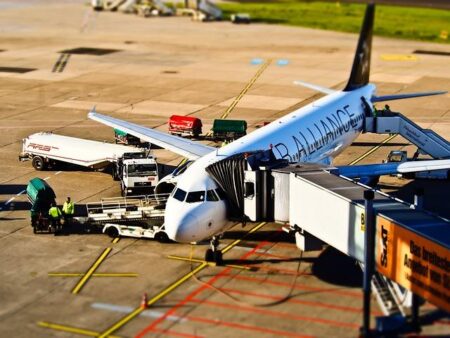As tensions simmer in the Middle East, sparking concerns over potential shifts in U.S. foreign policy priorities, analysts emphasize that Washington’s long-term strategic focus on countering China remains unwavering. Despite the region’s volatility drawing immediate attention, experts argue the United States is unlikely to let short-term crises in the Mideast derail its broader ambitions in the Asia-Pacific, underscoring a steadfast commitment to addressing the challenges posed by Beijing. This perspective comes amid ongoing debates about America’s global posture and balancing act between multiple geopolitical hotspots.
Mideast Conflicts Highlight US Strategic Challenges but Not China Priority
While ongoing conflicts in the Middle East continue to demand immediate attention from Washington, analysts emphasize that these crises are unlikely to derail the United States’ pivotal long-term focus on China. The complexity and urgency of regional tensions require tactical responses, but strategic priorities remain firmly anchored in the broader geopolitical challenge posed by Beijing’s expanding influence across Asia and beyond. Diplomatic and military resources may be temporarily diverted, yet US policymakers are expected to maintain robust efforts in countering China’s technological and military advancements.
Experts point out several key reasons why the US will preserve its China-centric agenda:
- Economic stakes: China represents the world’s second-largest economy and a central node in global supply chains, making it a critical partner and competitor simultaneously.
- Military rivalry: The Indo-Pacific region remains a strategic hotspot where US-China forces indirectly contest influence.
- Technological competition: Innovation races in AI, 5G, and semiconductors underscore shared stakes in global leadership.
| Factor | Middle East Conflicts | US-China Dynamics |
|---|---|---|
| Strategic Focus | Short-term crisis management | Long-term competition |
| Resource Allocation | Diverted but limited | Primarily prioritized |
| Geopolitical Scope | Regional | Global |
Analysts Explain Why Asia Remains Central to Washington’s Long-Term Agenda
Despite the recent tensions and distractions emerging from the Middle East, experts emphasize that Asia remains the pivotal arena in Washington’s strategic calculus. Analysts highlight that the US continues to prioritize countering China’s influence through a multi-faceted approach that encompasses economic, military, and diplomatic channels. This enduring focus is driven by Asia’s economic dynamism, critical trade routes, and the growing strategic partnerships the US fosters with key regional players such as Japan, India, and Australia.
Key factors reinforcing Asia’s centrality include:
- China’s expanding military footprint in the South China Sea
- Technological competition in areas like 5G and semiconductors
- The importance of Indo-Pacific alliances under the Quad framework
- US commitment to maintaining freedom of navigation and regional stability
Below is a simplified overview of US policy priorities comparing the Middle East and Asia-Pacific regions:
| Region | Main Focus | Strategic Instruments |
|---|---|---|
| Middle East | Short-term crisis management | Diplomacy, counterterrorism |
| Asia-Pacific | Long-term power balance | Military presence, economic partnerships |
Experts Recommend Enhanced Diplomatic and Military Focus in Indo-Pacific Region
Leading scholars and policy strategists emphasize a strategic recalibration that intensifies US engagement both diplomatically and militarily across the Indo-Pacific. Amid persistent tensions in the Middle East, experts argue the region’s emerging security architecture requires enhanced cooperation with key allies such as Japan, Australia, and India. This multilateral approach aims to counterbalance China’s expanding influence through sustained defense partnerships and increased joint military exercises that underscore US commitment to regional stability.
Key recommendations include:
- Expanding naval presence to secure vital sea lanes in the South China Sea.
- Accelerating technology sharing with regional partners to strengthen defense interoperability.
- Investing in diplomatic channels that promote economic resilience and conflict de-escalation.
| Focus Area | Strategic Objective | Timeframe |
|---|---|---|
| Naval Deployments | Enhanced maritime security | 1-3 years |
| Allied Collaboration | Strengthened military ties | Ongoing |
| Diplomatic Initiatives | Conflict mediation and economic integration | Medium-term |
In Retrospect
As regional tensions in the Middle East continue to capture immediate attention, analysts emphasize that Washington’s strategic priorities remain firmly anchored on countering China’s rise. While short-term distractions may shape diplomatic and military deployments, the enduring challenge posed by Beijing’s expanding global influence is set to dominate U.S. foreign policy agendas in the years ahead. The intersection of these complex dynamics will test the resilience and adaptability of American strategy in an increasingly multipolar world.




